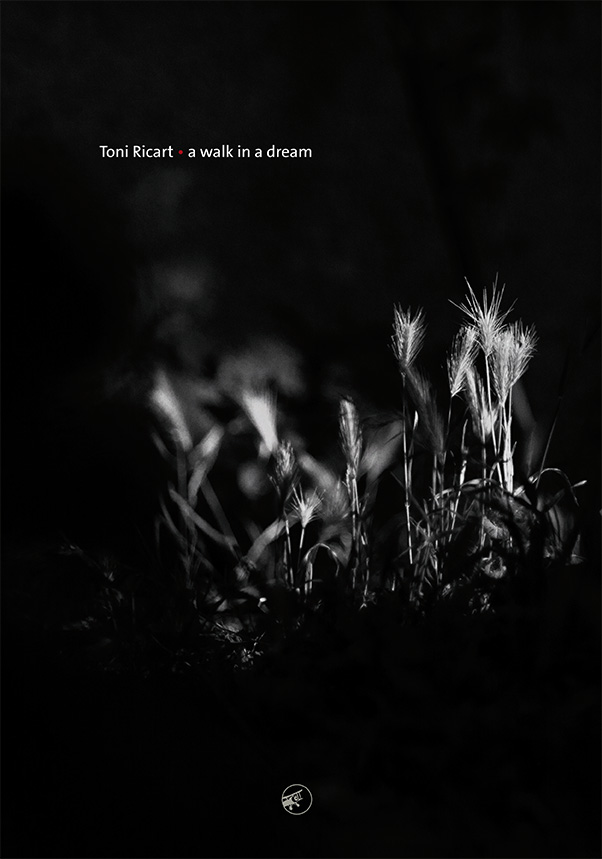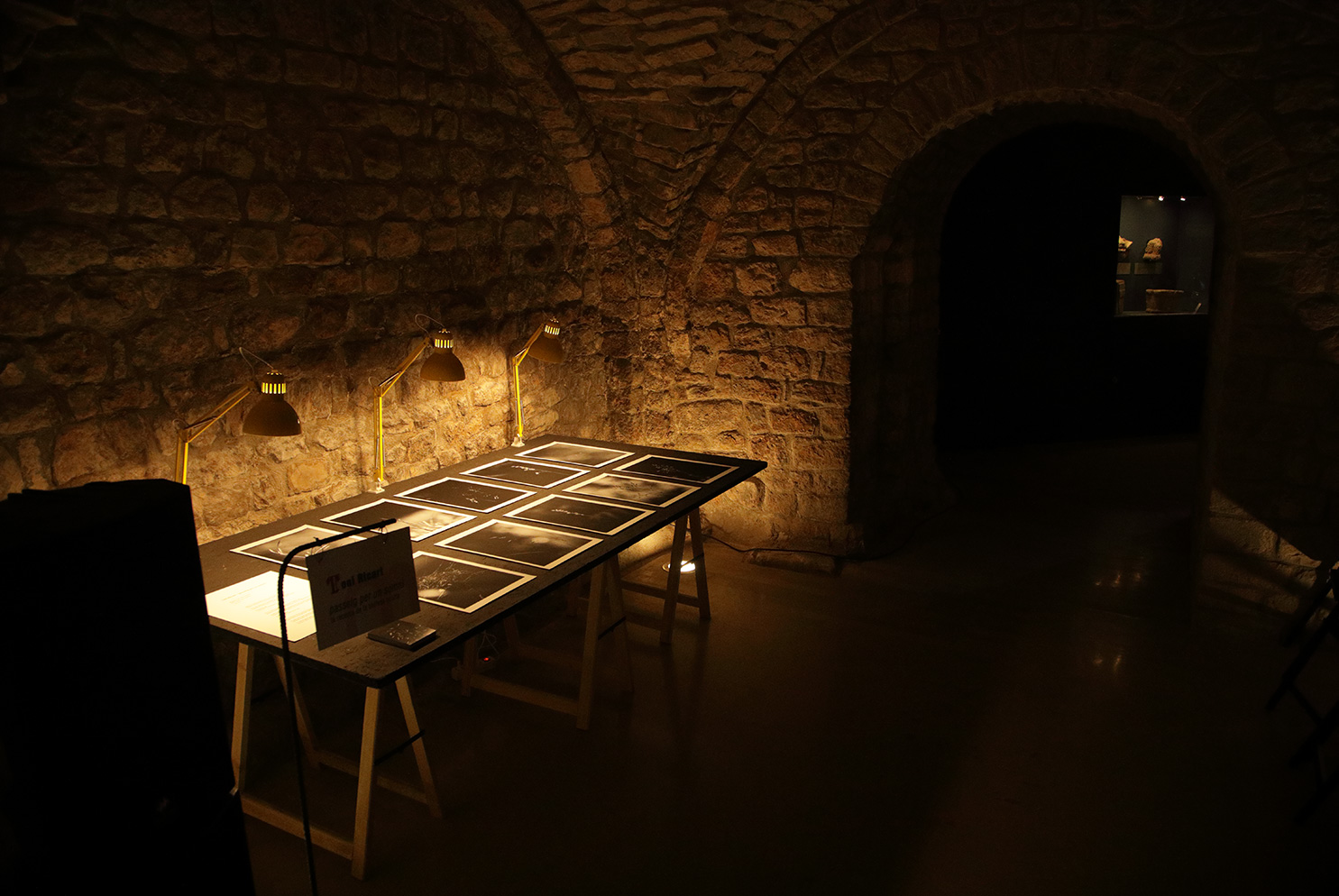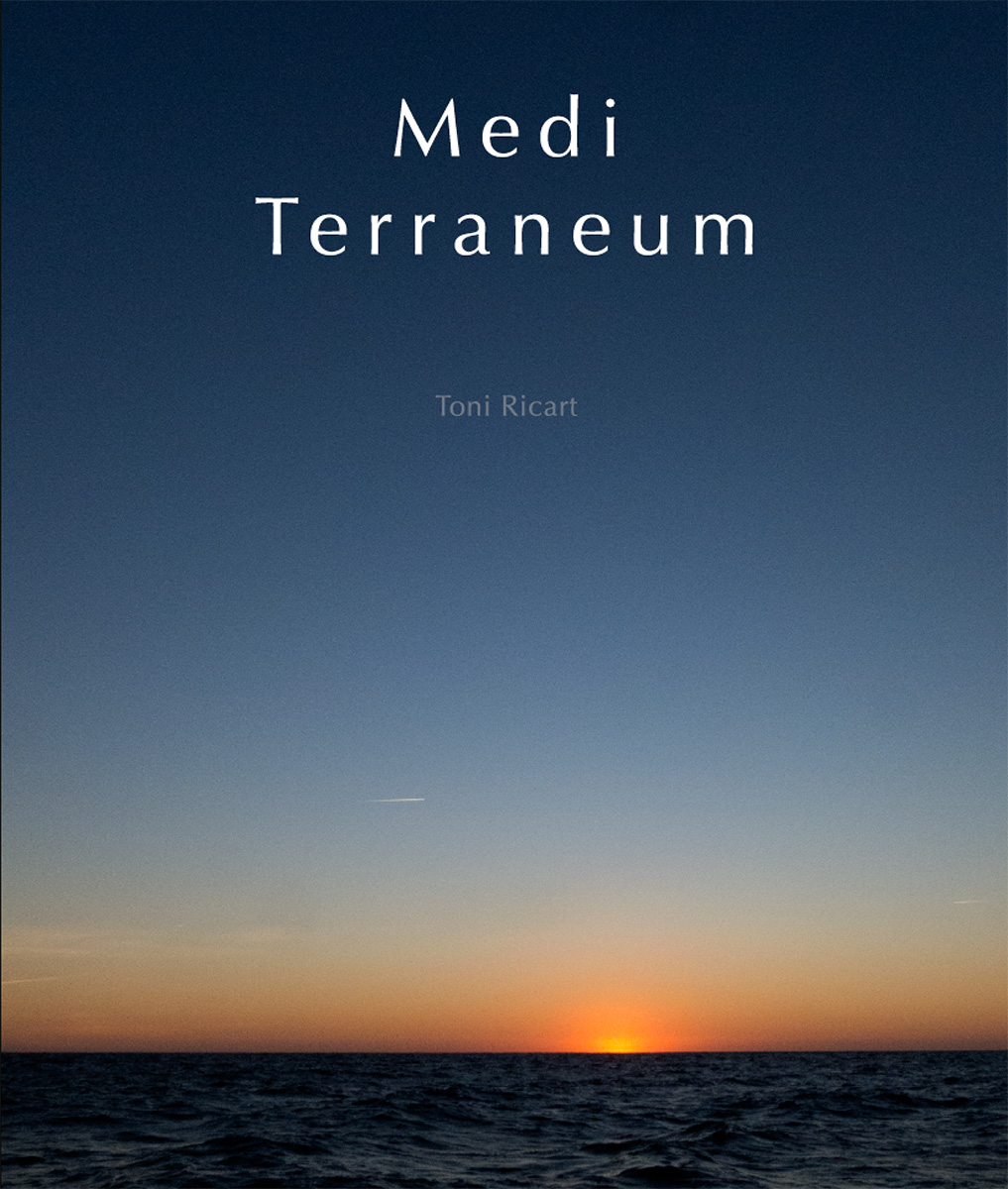
Medi Terraneum. Photographs by Toni Ricart
Introducing the latest book of photographs by Toni Ricart. A collection of photographs of the Mediterranean Sea, in a fine large-format edition.

Introducing the latest book of photographs by Toni Ricart. A collection of photographs of the Mediterranean Sea, in a fine large-format edition.

The book Més enllà dels ulls, a compilation of drawings, paintings and sculptures by Quicu Samsó, has just gone to press. As G. A. Jacovkis says in the book’s prologue: “Quicu Samsó creates with a couple of drumsticks, a paintbrush or a chisel. He is able, with any of these tools, to destroy limits, to go beyond. Thus his pictures and sculptures manage to escape from canvasses and stones, and to become feelings and emotions; then they return to their origin, to the emotions and feelings they were born from. He is wholly contained in each of his creations.”
Quicu Samsó is also an excellent drummer, a reference in Barcelona’s jazz of recent decades. He has formed part of groups such as Koniec, Moisés Moisés, Obmuz and Macromassa. He has also collaborated with musicians such as John Zorn, Agustí Fernández, Hiroshi Kobayashi and Pascal Comelade.
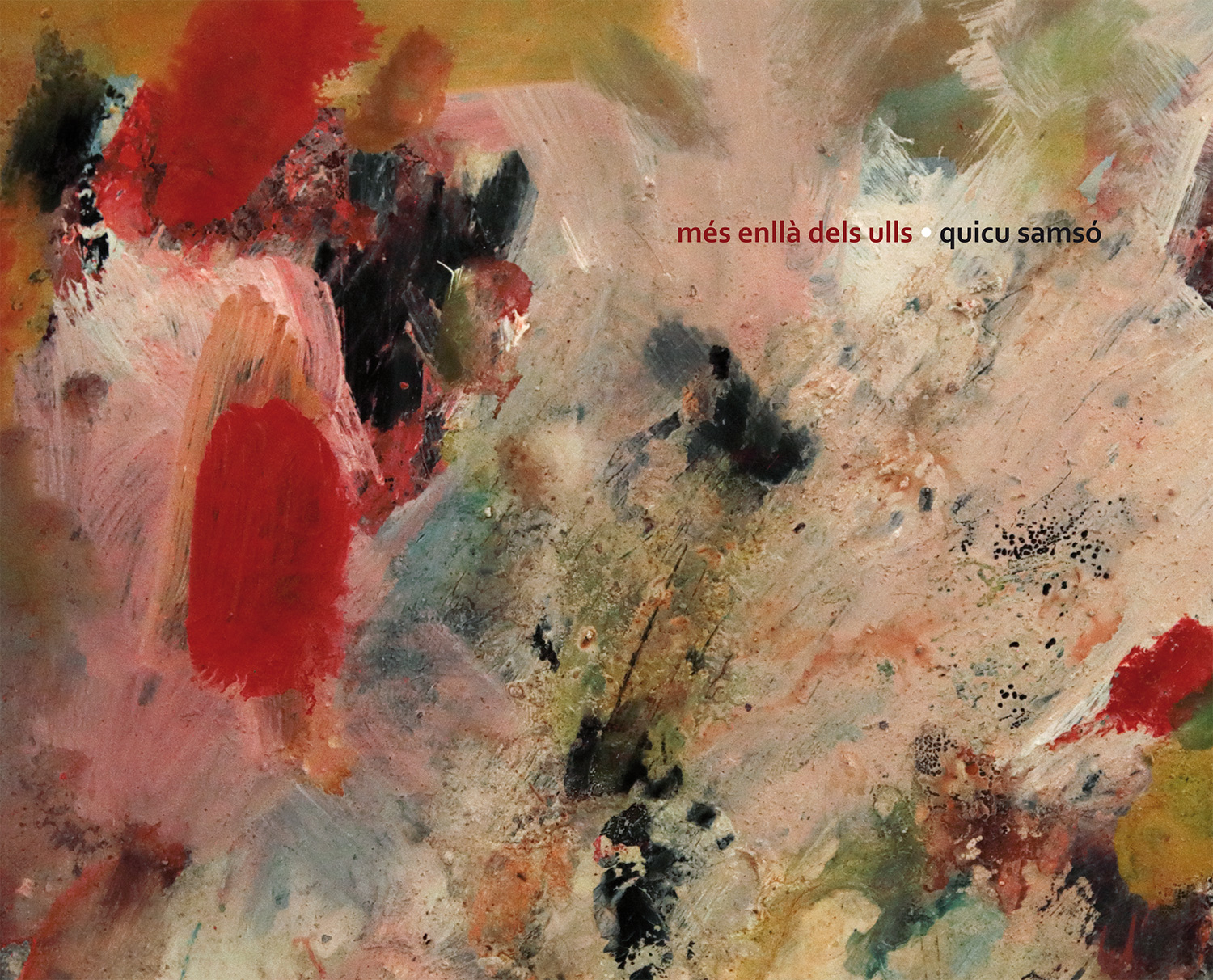
On May 16th we presented the book músics, by Toni Ricart, at the Conservatori del Bruc, in Barcelona.
The event was conducted by Jordi Soley, and we had the chance to enjoy the music of Quartet Clandestí, that played pieces by Mendelssohn and Dvorak.


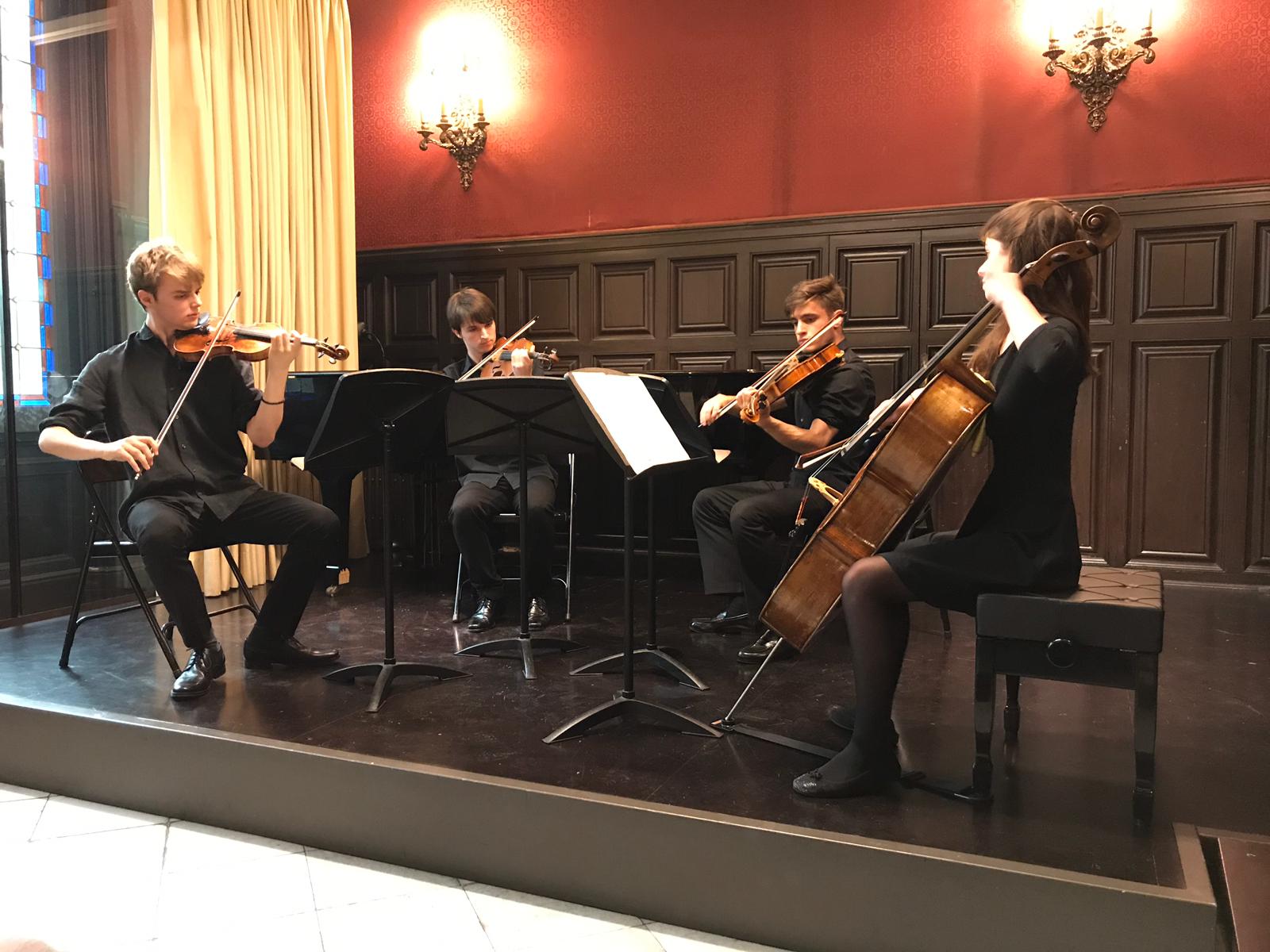
We are pleased to announce the release of the book músics, photographs by Toni Ricart, impeccably printed by Nova Era publications.
músics is a collection of 66 portraits of musicians with their instruments. The author explains the origin of the project when, in a portrait session, he observed the difference in attitude of a musician if he posed with or without his instrument:
“The instrument acts as an appendix of the musician’s body. If he holds it in his hands, he feels released from the “aggression” that is being observed, scrutinized, from the other side of the viewfinder.”
The Brazilian photographer Marcio Scavone writes in the foreword:
“Toni has a graphic visual signature, he creates a dialogue combining different hues of black, white and gray with the authority that his professional trajectory has given him. But I already knew that. Now I see the portrait photographer, the hunter of poses, the obsessive observer of hands and eyes; clues with which to unravel souls.
These portraits are moments spent with the musicians, not moments of their music. Toni is more interested in evoking the inner moment of the subjects of his portraits, which will eventually turn into an artistic expression. The relationship with his musicians is through their silence and the dormant potential of their instrument, or just a part of it, aptly framed; it is as if the whole depended so much on an extended time that the photographer chose to inflame our imagination with the possibilities of music and not of the musical moment.”
The presentation will take place in Barcelona on May 16th. We will keep you informed.

Multistudio Books presented last April 4 Axiomagrafies 2, the latest book by Pla-Narbona and Joan Costa. The event was held at Casa Aymat in Sant Cugat, presented by Oriol Pi de Cabanyes.




We have just published a 64-page book that includes the pictorial work of the artist based in Quebec, René Gélinas.
“René Gélinas has drunk the light of Matisse, the dreams of Chagall and the entrails of Charlotte Salomon, and has come out drunk. The result of this drunkenness is a mixture of contradictory feelings, incisive and frivolous looks, dark and funny, noisy and silent. It is in this chaos where the strength of his art lies. The same force that makes us voyeurs accomplices of his scenes of hieratic characters, absurd collections of objects, the intense cold of the alleys of the Plateau, in Montreal.
René painter, poet, singer, dazzles us nicely and we let ourselves go to a hidden world, with the desire to discover it slowly.”
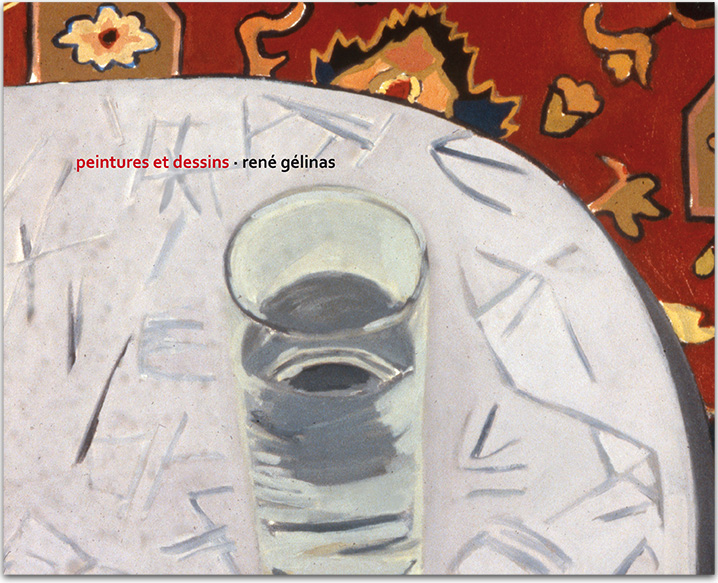
It has been a privilege to publish this book by Pla-Narbona and Joan Costa. We have spent many hours at the computer with master Pla-Narbona, discussing and polishing details of the layout and design of the book. A pleasure to work with a reference of graphic design of the 60s and 70s, who is also an excellent painter, engraver and sculptor, and above all a great person.
Josep Pla-Narbona (Barce-
lona, 1928) pioneer of graphic design in our country and one of the international reference names; draftsman, engraver, painter and sculptor. Founding partner and first president of Grafistes FAD (current ADG FAD). He promoted the creation of the LAUS prizes to which he endowed with this name. National Design Award 2004, Gold Illustrated Award 2011, LAUS Award of Honor ADG-FAD (2000 and 2011), Gold Medal of the Cercle Artístic de Sant Lluc 2012.
Joan Costa (Badalona, 1926) is a self-taught, communicologist, sociologist, designer and methodologist. Since 1994 he collaborates with the Faculty of Communication of the UAB. Author of 47 books published in Argentina, Brazil, Spain, France, Mexico, Portugal and the United Kingdom. Awards for Research on Mass Communication, Generalitat de Catalunya, 1988. Doctor Honoris causa for the Universitat Jaume I, Castelló; Universidad Siglo 21, Argentina and Peruvian University of Applied Sciences, Lima.
Published in catalan, with spanish and english translations.
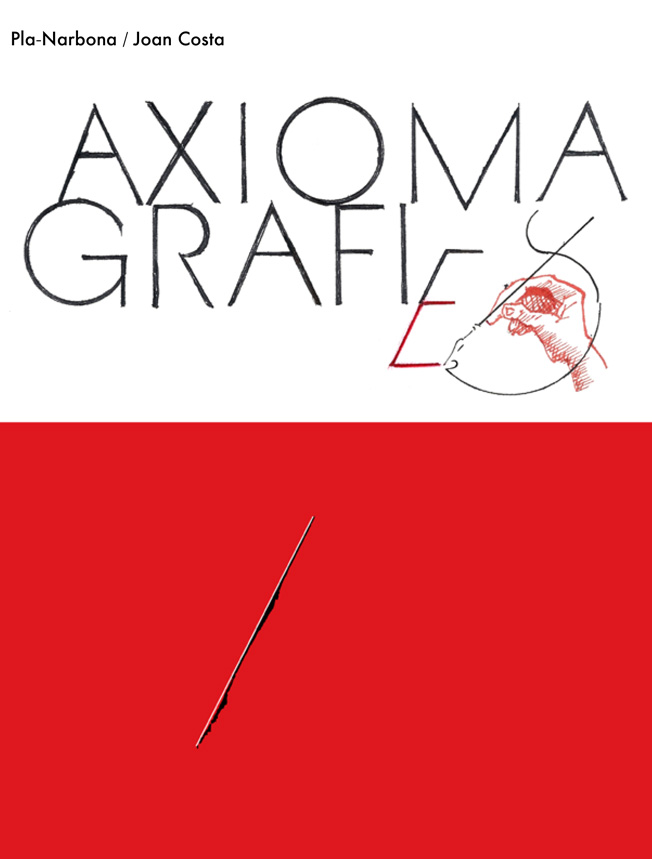
We have published the third title of the poetry collection: Apunts d’Egea, by Jordi Mas, with illustrations by Toni Ricart.
Apunts d’Egea is a compilation of poems written during the long hours of navigation on a trip through the Aegean aboard the Anònim, from April to June 2018.
(Catalan edition)
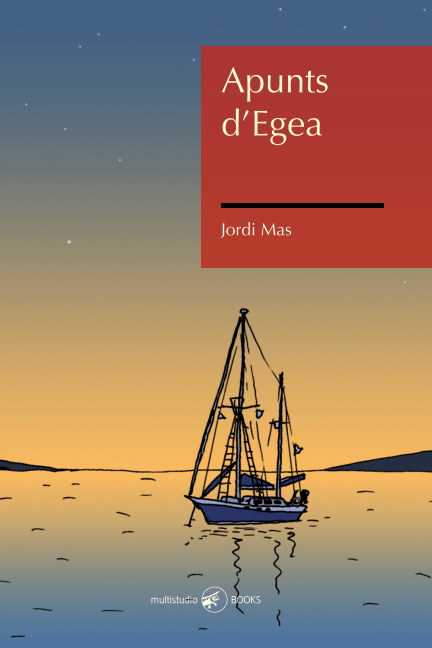
New book of photobook by Toni Ricart, where he explores the beauty of the small details of the garden.
“This is a walk driven by the pursuit of intimate beauty, trying to discover surprising shapes in hidden corners of the garden. The game between focus and depth of field turns backgrounds into unexpected geometric patterns dancing in dreamlike atmospheres. The walk through the garden becomes a walk in a dream.”
The launch of the book has coincided with an exhibition of a selection of photographs, in a privileged setting: the Monastery of Sant Llorenç, in Guardiola de Berguedà.
